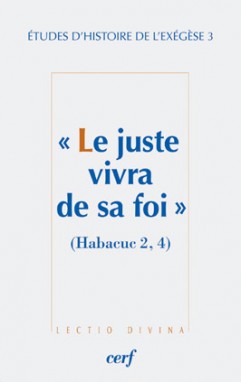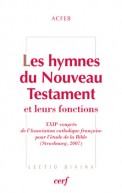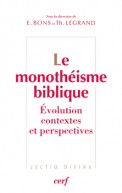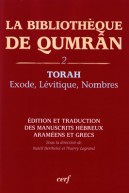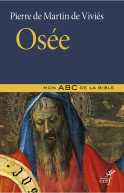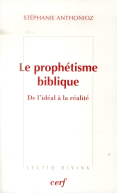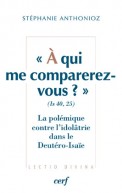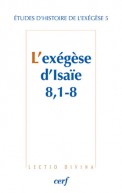Juste vivra de sa foi (Le)
Collection Lectio Divina - N° 246
144 pages - janv. 2012
16,50€
--
Habakkuk 2, 4: ‘The righteous will live by their faith’ - is just as well-known and often quoted in the Jewish tradition as in the Christian. Its use in Paul’s epistles confirms its significance. From the Christian viewpoint, it strengthens reflections on justification by faith; from the Jewish viewpoint, not only does it underline the fundamental role of faith (‘emunah’), it also defines the relation between faith and the Law. In this book, five stages in the history of the exegesis of this verse are studied; from ancient Jewish hermeneutic tradition to the attention contemporary Jewish exegesis gives to the importance of works, taking in the Greek and Latin Fathers, the medieval commentators and finally Luther and Calvin. This impressive itinerary shows the richness of this verse and the impact it has had on different traditions of interpretation. This book is the fruit of the third ‘Bible Day’ organized by the Laboratoire d'études des monothéismes/Institut d'études augustiniennes (CNRS-EPHE Sciences religieuses-Paris IV) and the Research Group on religious non-conformists of the 16th and 17th centuries and the history of Protestantism (GRENEP, Protestant theology dept. of the University of Strasbourg). It is one of a series devoted to the history of Biblical exegesis.
- Dimensions : 135x215x12
- ISBN : 9782204097093
- Poids : 210 grammes
Avec la collaboration de : Annie Noblesse-Rocher, David Banon, Gilbert Dahan, Martine Dulaey, Matthieu Arnold, Thierry Legrand
DU MÊME AUTEUR
> VOIR TOUS LES LIVRES DE l'AUTEUR
DANS LA CATÉGORIE EXÉGÈSE BIBLIQUE
Le Prophétisme biblique - LD 261
De l'idéal à la réalité
de Stéphanie Anthonioz
272 pages - août 2013
Des héros peu ordinaires
Théologie et histoire dans le livre des Juges
de Philippe Abadie
208 pages - oct. 2011

